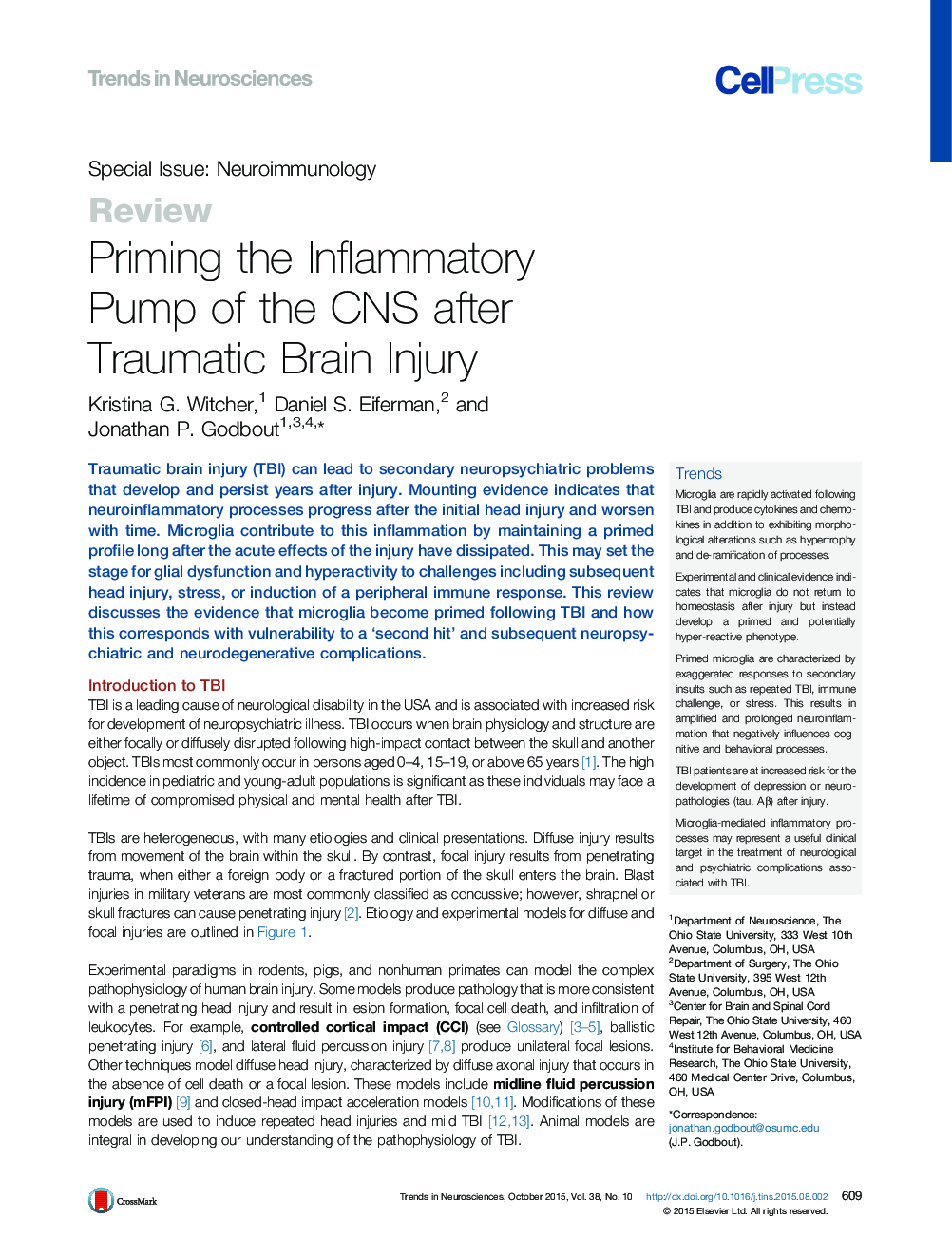| کد مقاله | کد نشریه | سال انتشار | مقاله انگلیسی | نسخه تمام متن |
|---|---|---|---|---|
| 4354108 | 1299012 | 2015 | 12 صفحه PDF | دانلود رایگان |

Traumatic brain injury (TBI) can lead to secondary neuropsychiatric problems that develop and persist years after injury. Mounting evidence indicates that neuroinflammatory processes progress after the initial head injury and worsen with time. Microglia contribute to this inflammation by maintaining a primed profile long after the acute effects of the injury have dissipated. This may set the stage for glial dysfunction and hyperactivity to challenges including subsequent head injury, stress, or induction of a peripheral immune response. This review discusses the evidence that microglia become primed following TBI and how this corresponds with vulnerability to a ‘second hit’ and subsequent neuropsychiatric and neurodegenerative complications.
TrendsMicroglia are rapidly activated following TBI and produce cytokines and chemokines in addition to exhibiting morphological alterations such as hypertrophy and de-ramification of processes.Experimental and clinical evidence indicates that microglia do not return to homeostasis after injury but instead develop a primed and potentially hyper-reactive phenotype.Primed microglia are characterized by exaggerated responses to secondary insults such as repeated TBI, immune challenge, or stress. This results in amplified and prolonged neuroinflammation that negatively influences cognitive and behavioral processes.TBI patients are at increased risk for the development of depression or neuropathologies (tau, Aβ) after injury.Microglia-mediated inflammatory processes may represent a useful clinical target in the treatment of neurological and psychiatric complications associated with TBI.
Journal: - Volume 38, Issue 10, October 2015, Pages 609–620